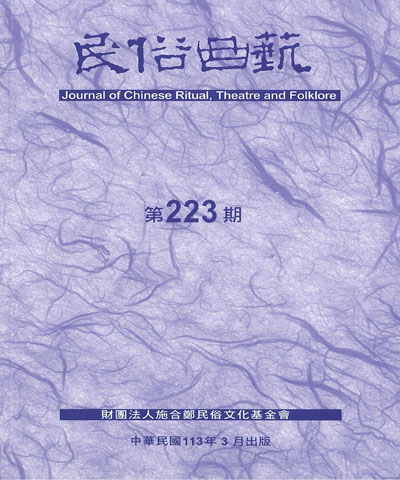
民俗曲藝/Journal of Chinese Ritual, Theatre and Folklore
財團法人施合鄭民俗文化基金會,正常發行
五年影響係數
0.171
數據由ACI學術引用文獻資料庫提供
0.171
2024 年
學門
領域排序
藝術
5
人類
3
關於
有關傳統戲曲、曲藝、音樂、民俗、儀式之論著、書評或調查報告
出版資訊
- ISSN : 1025-1383
- DOI : 10.30157/JCRTF
- 出版單位 : 財團法人施合鄭民俗文化基金會 , 台灣
- 地址 : 西寧北路62-3號3樓
- 收錄起始 : 151期(2006/03)
- 學科分類
- 期刊索引 : TSSCI, THCI, ACI
- 刊頻 : 季刊 , 正常發行

